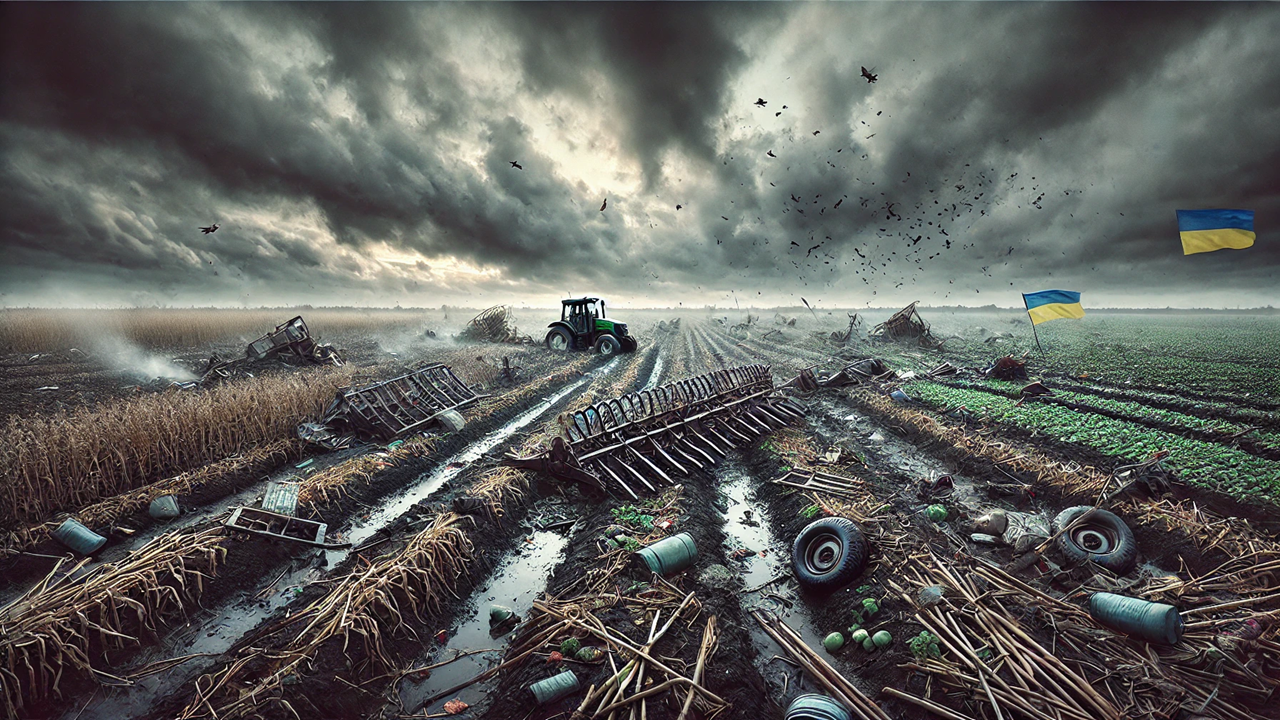Ukraine’s Agricultural Future: Balancing Survival and Transformation Amid War and EU Aspirations
Ukraine’s agricultural sector is at a pivotal moment. While the immediate focus is on surviving the war with Russia, the future demands a broader transformation towards climate-resilient, inclusive farming that aligns with EU standards. The World Bank’s report "Priorities for Agricultural Support in Ukraine" outlines a strategic path forward, emphasizing the need for public investment in agricultural services and climate-smart practices. The report also highlights the importance of aligning with EU requirements as Ukraine looks to integrate into the European community.

Ukraine’s agricultural sector, long considered the backbone of its economy, is at a critical crossroads. The ongoing war with Russia has brought unprecedented challenges, yet there is also a unique opportunity to reshape the sector for the future. A recent report titled "Priorities for Agricultural Support in Ukraine" by the World Bank provides a roadmap for navigating the immediate crisis while laying the groundwork for long-term transformation. The stakes are high, with the future of Ukraine’s agriculture hanging in the balance as the nation strives to maintain its role as a global food supplier while preparing for potential European Union (EU) accession.
Surviving the Immediate Crisis
As Russia’s invasion grinds on, Ukraine's agricultural sector is grappling with severe disruptions. Farms and agribusinesses are facing a daunting array of challenges, from destroyed infrastructure to disrupted supply chains. According to the World Bank report, the short-term focus must be on survival. This includes ensuring access to affordable finance, improving export logistics, and, critically, demining farm fields to restore productivity.
The scale of the damage is staggering. The report estimates the total cost of reconstruction and recovery at $56 billion over the next decade. Much of this will go towards replacing damaged assets and supporting small-sized farms, which are particularly vulnerable in this crisis. These farms, often the lifeblood of rural communities, are struggling to stay afloat as they contend with rising costs and limited access to credit.
Preparing for Long-Term Transformation
While immediate survival is paramount, the World Bank report emphasizes the need to look beyond the current crisis. Once the war ends, Ukraine’s agricultural sector will need to undergo significant changes to remain competitive and sustainable. The focus will shift from simply producing more food to doing so in a way that is inclusive, climate-resilient, and aligned with EU standards.
Key to this transformation is the adoption of climate-smart agriculture (CSA) practices. The report highlights the potential for carbon financing, estimated at $5.3 billion, which could play a crucial role in funding the transition to more sustainable farming methods. However, this will require substantial public investment, particularly in general support services like agricultural knowledge and innovation systems, inspections, and infrastructure development.
The path to EU accession will also demand significant changes. Ukraine will need to align its agricultural policies and institutions with EU standards, a process that will involve establishing competent authorities to manage agricultural programs, ensuring compliance with strict environmental and social standards, and investing in necessary infrastructure. The report stresses that without these changes, Ukraine’s progress towards EU integration could be hindered.
The Challenges Ahead
The challenges facing Ukraine’s agricultural sector are formidable. Climate change is an ever-present threat, with increasingly erratic weather patterns exacerbating the sector’s vulnerabilities. The report notes that Ukraine’s agricultural output has become more volatile in recent years, driven by both average climatic conditions and extreme weather events.
Small-sized farms, which make up a significant portion of Ukraine’s agricultural landscape, are particularly at risk. These farms often have limited access to finance and services, making it difficult for them to adopt new technologies or expand their operations. The report calls for tailored support for these farms to ensure they can compete in the market and contribute to Ukraine’s agricultural future.
A Strategic Use of Resources
Given Ukraine’s limited fiscal space, the World Bank report urges a strategic approach to public spending. Public expenditures should focus on areas that attract private investment and deliver public goods. This includes not only direct farm payments but also investments in general support services that can help drive the sector’s transformation.
The proposed redesign of agricultural support involves shifting resources from direct payments to farmers towards enhancing agricultural services. This shift is seen as essential for achieving sustainable growth and ensuring that Ukraine’s agricultural sector can meet the challenges of the future.
- FIRST PUBLISHED IN:
- Devdiscourse










